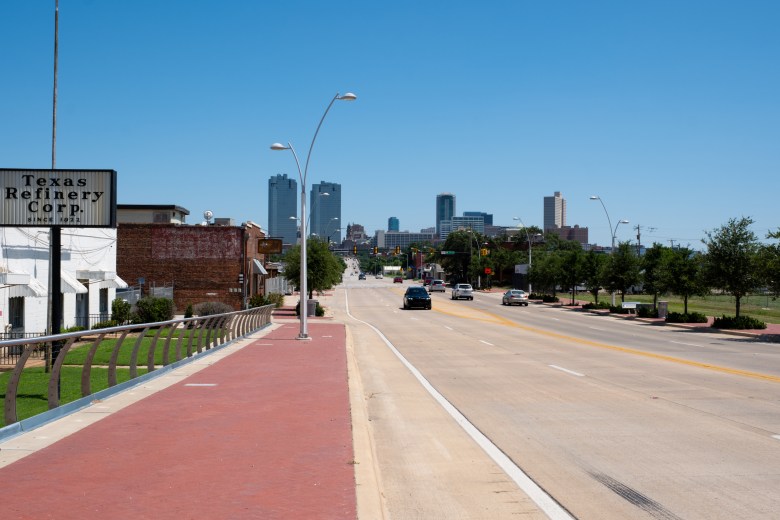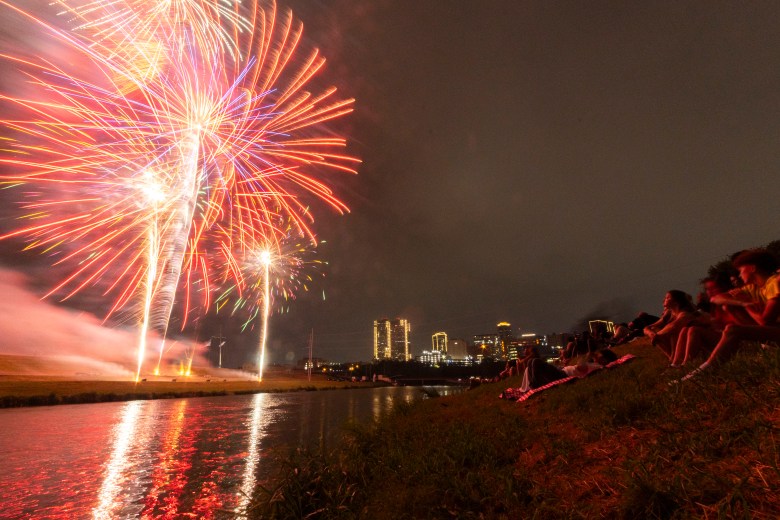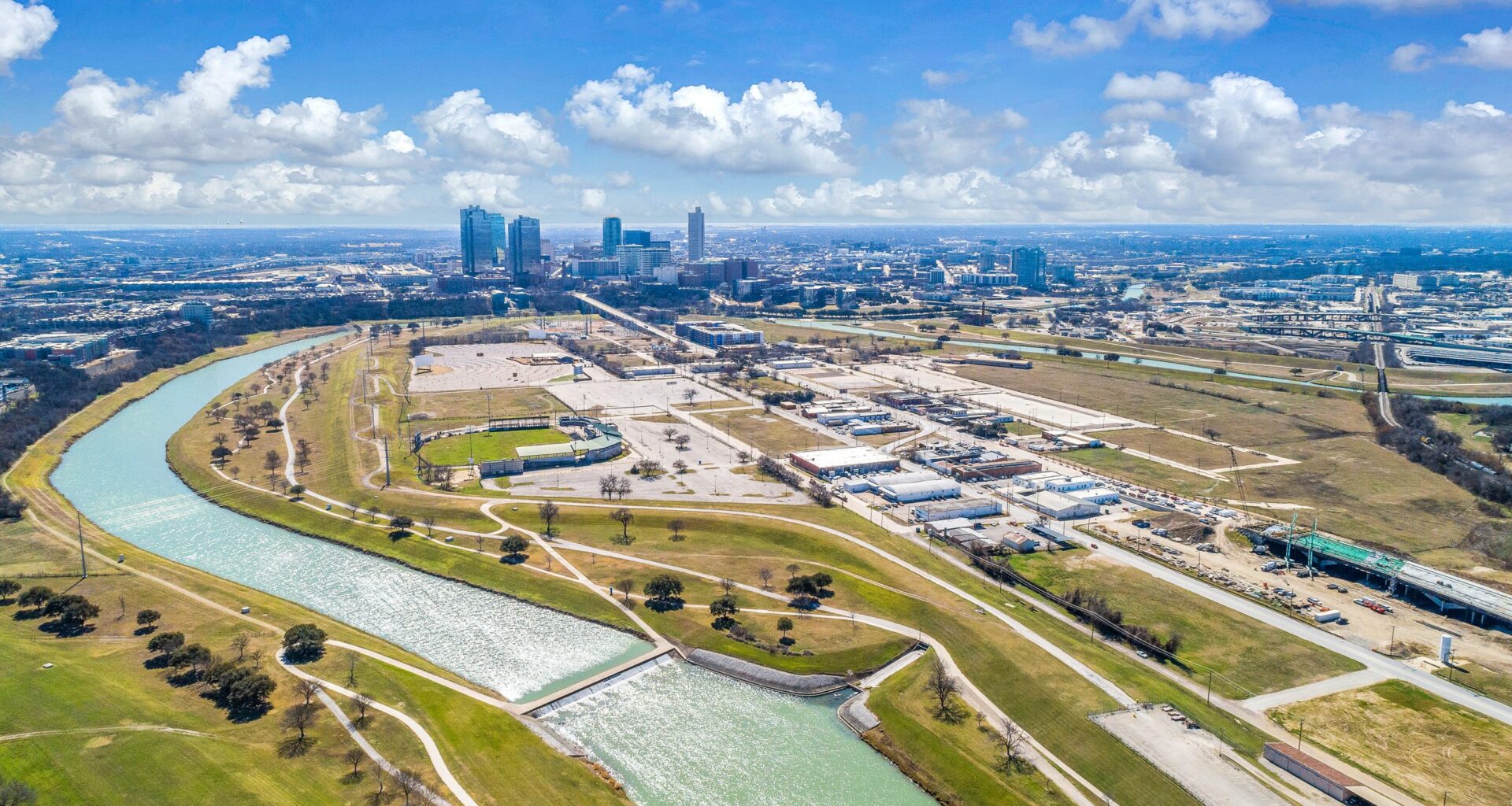The long-awaited Panther Island project, intended to transform the Northside with new housing, retail and businesses, is moving forward.
The Tarrant Regional Water District is seeking proposals from potential partners interested in starting redevelopment projects on Fort Worth’s Northside.
The water district on Thursday afternoon issued a request for qualifications, or RFQs, officially opening the process of seeking a development partner for 20 acres off of North Main Street and, more broadly, inviting ideas from groups interested in the entire district. Proposals are due Nov. 26.
“We think that there’s going to be a lot of demand there,” Susan Alanis, Panther Island program director for the water district, said in an interview. “Everybody’s been waiting in this community for this to happen, and now our responsibility is to let everyone know what preparation work has been done and that the infrastructure is ready for us to make progress.”
 Motorists across the North Main Street bridge, one of three bridges the Tarrant Regional Water District has built over dryland in preparation for a bypass channel to be dug beneath the span. (Camilo Diaz | Fort Worth Report)
Motorists across the North Main Street bridge, one of three bridges the Tarrant Regional Water District has built over dryland in preparation for a bypass channel to be dug beneath the span. (Camilo Diaz | Fort Worth Report)
The initial focus is on several properties bounded by North Main Street on the west, 5th Street on the north, the Trinity River levee on the east, and 4th Street on the south.
The acreage in the first phase map is held by the water district; Seco Ventures, an office, residential and mixed-use developer based in Austin; and other private property owners. The request for proposals doesn’t address the privately held property, “but we intend to coordinate with them,” Alanis said.
The water district’s action, while small, is one of multiple events moving the complicated project forward.
The Fort Worth City Council on Oct. 21 will consider a city-initiated zoning change that will widen the permissible range of building heights in part of the Panther Island district. Other changes the city is expected to make next year include updating the “form-based codes” that govern development on the island and encourage densely populated, walkable environments.
The project includes building a bypass channel to reroute the Trinity River south of downtown to north of the city, creating “Panther Island.”
Construction on the project’s north channel is expected to start late next year and be completed in 2029. The water district is still seeking full funding for the south part of the bypass channel.
The river levees will be removed once the bypass channel is complete, opening a significantly greater amount of land to development. But getting to that point will take more than 10 years, given the pace of obtaining federal funding to support the flood control aspect, Alanis said.
 Spectators watch fireworks during Fort Worth’s Fourth on July 4, 2025, at Panther Island Pavilion in Fort Worth. (Mary Abby Goss | Fort Worth Report)
Spectators watch fireworks during Fort Worth’s Fourth on July 4, 2025, at Panther Island Pavilion in Fort Worth. (Mary Abby Goss | Fort Worth Report)
In the meantime, a small part of Panther Island can be developed, built around existing assets — such as Panther Island Pavilion on the Trinity River and a green space that will replace the current 4th Street east of North Main.
“What’s great is that there’s a lot of developable property before (the levees come down), and the intent is to really gain some momentum now,” Alanis said.
The water district earmarked up to $50 million for construction of canals, “paseos” and park improvements to begin in 2026 in the first phase, according to the RFQ documents.
Design is 30% complete for those, according to water district documents. The city of Fort Worth and North Central Texas Council of Governments allocated money for street design and bridges to be built over the network of canals also to be built in the first phase, according to documents.
 Attendees find and settle into their spots to watch the fireworks during Fort Worth’s Fourth on July 4, 2025, at Panther Island Pavilion in Fort Worth. (Mary Abby Goss | Fort Worth Report)
Attendees find and settle into their spots to watch the fireworks during Fort Worth’s Fourth on July 4, 2025, at Panther Island Pavilion in Fort Worth. (Mary Abby Goss | Fort Worth Report)
In mid-2026, the water district expects to begin construction of the next section of the canal system, creating a walkable waterfront.
“It seems like a real opportune time to have some place-making alongside the development,” Alanis said.
The water district is talking to the owner of the Coyote Drive-In, whose site is in the first phase map. The district owns the property that Coyote leases; the site is due to be redeveloped with greater density at some point.
The drive-in has four screens, and the water district is talking to Coyote about continuing to operate at least two screens, at least through construction, and whether they’d be interested in managing events at Panther Island Pavilion and a park to be built, Alanis said.
“It’s going to be a complex place out there during construction and really difficult for a little while,” Alanis said, “and so it’s great to have a long-term partner who will understand that and, hopefully, be willing to work with us through it.”
Additionally, development on Panther Island is critical to the performance of the city’s Trinity River Vision Tax Increment Finance District, which generates money for public infrastructure based on future growth in the district’s property tax base.
The Trinity River Vision taxing district effectively generates the local match necessary for the federal funding allocated to complete the flood control project.
“It’s important for us to be advancing (development on the island) as quickly as possible,” Alanis said. “But we’re just finally ready with all of the preparation work. Land assembly, design work, infrastructure planning, all of those things have come together.”
Related
Fort Worth Report is certified by the Journalism Trust Initiative for adhering to standards for ethical journalism.
Republish This Story
Republishing is free for noncommercial entities. Commercial entities are prohibited without a licensing agreement. Contact us for details.

